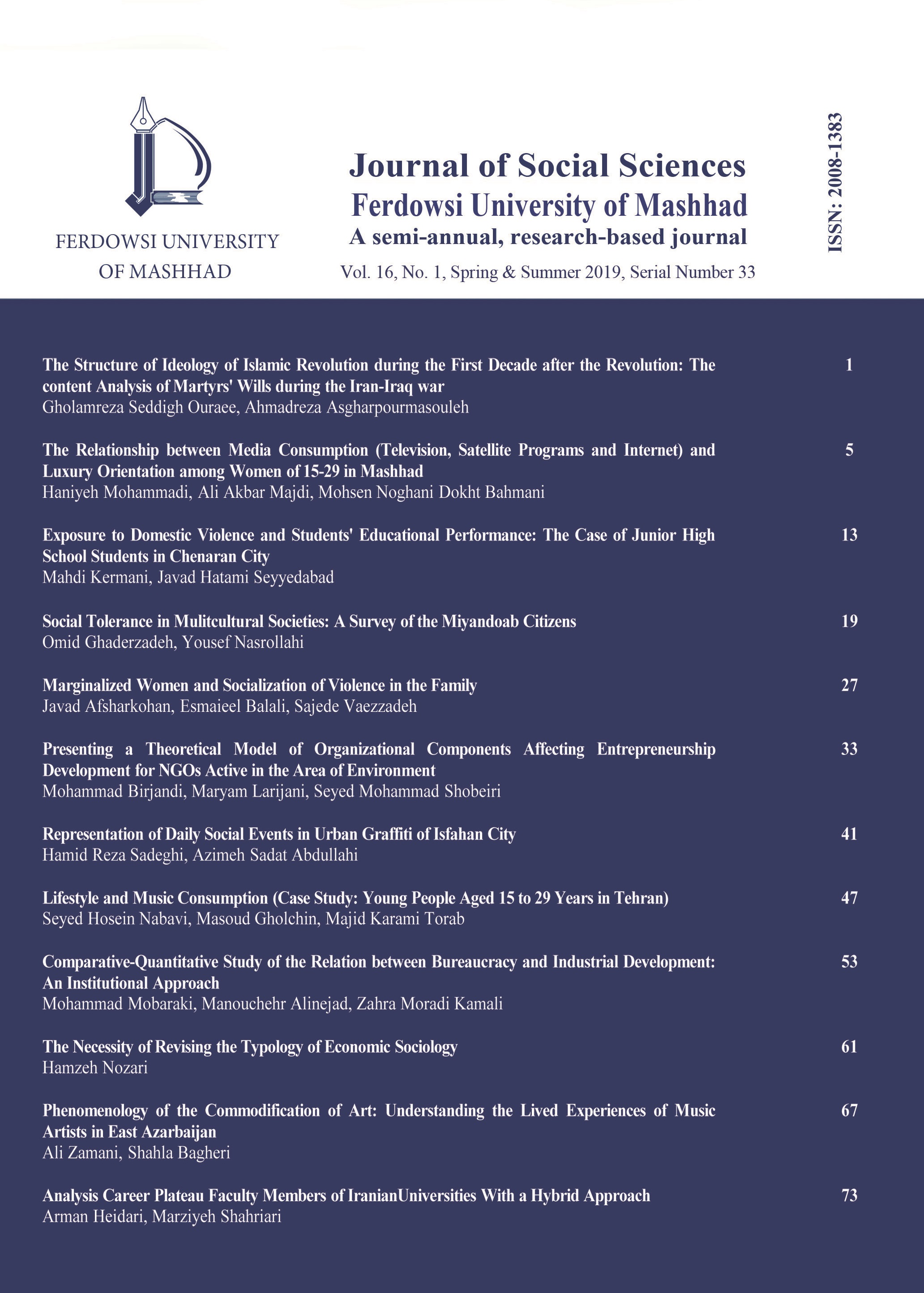Document Type : Scientific-Research
Authors
Yazd University
Abstract
Extended Abstract
Introduction
Achieving industrial development is impossible without recognizing the factors that decelerate or accelerate its pace. One of these factors is the role played by bureaucracy which may have a number of conflicting effects on the industrial development of a society. In certain developing countries, bureaucracy has improved the socioeconomic conditions of societies and facilitated and accelerated the accumulation of capitals while in other cases, it has resulted in the decline of economic resources and has been transformed into a grave barrier against industrial development. Subsequently, the present study seeks to examine the relation between bureaucracy and industrial development in a number of different countries during the period of 1996-2012 in order to identify how bureaucracy affects industrial development.
Review of Literature
Given the considerable impacts of bureaucracy on industrial development of different societies, the present study seeks to offer a comparative-quantitative analysis of the relation between the two using and institutional approach. In general, two types of governments are recognized in the institutional approach which include:
The Developmentalist Government: A government in which there is a combination of both independency from the society and dependency on the society.
The Predator Government: As the opposite of the developmentalist government, this type of government involves lack of lawfulness, precedence of relations over regulations, large gap between political and social powers, and absence of judicial coherence; in this case, everything is available for trade, the government cannot prevent each and every authority from seeking their own personal objectives, and the only sources of solidarity are relations (Habibi, 2010).
The theorists of the developmentalist government include figures such as Peter Evans, Adrian Left Vich, Richard Askolar, Keith Griffin, and Terry Makneli. In this regard, Evans and Vich have had a significance influence on the concept and the theoretical foundations were derived from their views.
Method
The present study was conducted using the comparative-quantitative method in which unbalanced panel and periodic data were used; each period involves 5 years during which countries were examined as the unit of analysis. Consequently, using the secondary analysis technique, first the valid data related to the variables of study were collected for an extensive spectrum of countries (all the countries with data related to the variables of the study); then, it was attempted to address the relation between bureaucracy and industrial development during the period of 1996-2012.
Results and Discussion
The results of the study suggest that there is a positive, significant relation between regularity and industrial development in the examined countries; in other words, the more public and private institutions and organizations behave according to order and regulations, the more said society would be successful in achieving industrial development. The results also showed a significant relation between the sovereignty of the law, corruption control, the size of the government, and industrial development in the countries under examination. Finally, the findings of the study demonstrated that the efficiency of bureaucracy is influenced by a number of variables such as the government’s accountability, its size and regularity, sovereignty of the law, and efficiency and effectiveness of governance.
Conclusion
The present study was conducted to provide answers to the following question: Why has developing countries failed in their path towards industrial development, despite their adherence to the patterns and methods used by developed countries in line with achieving economic development?
The analyses suggested the presence of a relation between bureaucracy and industrial development during a particular period; bureaucracy is effective when it is functional and efficient. According to the results of the study, this functionality and efficiency of bureaucracy is influenced by variables of institutional conditions such as government’s accountability, its size and regularity, sovereignty of the law, corruption control, and efficiency and effectiveness of governance.
Suitable institutional conditions (government’s accountability, controlling its size and regularity, sovereignty of the law, corruption control, and efficiency and effectiveness of governance) have a positive effect on bureaucracy. In societies where such institutional conditions take form, bureaucracy can meddle and resolve problems including: 1. The mitigation of the lack of trust towards the government and the formation of an intimate relation between government and the people; 2. Reduction of embezzlement, corruption, etc.; 3. The existence of order among authorities and public institutions as well as a plan in line with achieving their purposes; 4. Concentration on the private sector, increasing employment in the private sector, and the reduction of governmental expenses; and 5. Optimized use of resources, etc. As a matter of fact, success towards achieving industrial development is attainable for governments that are accountable in the face of their people and inform them of issues regarding economic conditions among others; governments equipped with a strong judicial system along with powerful laws; governments that follow their plans with order towards achieving their purposes; governments that do their best in using natural and human resources; governments that prevent the expansion of their size through providing employment conditions at other sectors; and finally, governments that take substantial actions in line with corruption control and mitigation and manage to lower the extent of corruption within public and private organizations. In addition, success in providing suitable institutional conditions is possible for those societies that involve suitable norms, behaviors, and structures.
Keywords

Send comment about this article